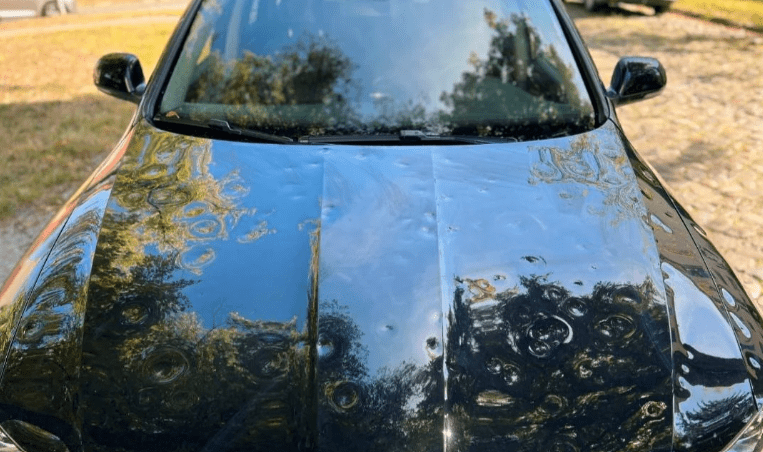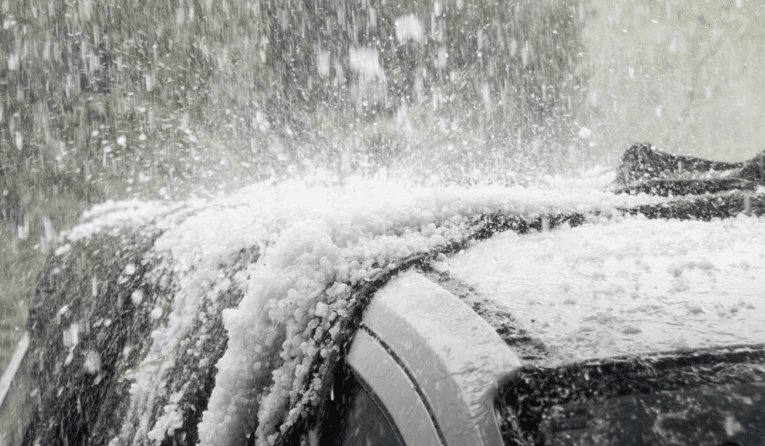how to fix hail damage – Hail can cause unsightly dents and dings on your car, but with the right approach, you can restore its pristine condition. Here’s a comprehensive guide to fixing hail damage:
1. Assess the Damage:
- Severity: Start by determining the severity of the damage. Minor dents and dimples can be addressed with DIY methods, while extensive damage may require professional help.
- Location: Identify the location of the dents. Certain areas, like the roof or hood, may require specific repair techniques due to their accessibility and panel composition.
2. Choose Your Method:
A. Minor Hail Damage:
- Paintless Dent Repair (PDR): This professional method uses specialized tools to massage dents from behind the panel, restoring its original shape without paintwork.
- Dry Ice Method: Wear gloves and apply a dry ice piece to the dent. The rapid cooling contracts the metal, popping out the dent. (Caution: Dry ice can burn skin)
- Heat Gun and Plunger Method: Use a heat gun to warm the dent gently. Then, push it out with a plunger. (Caution: Heat guns can damage paint)
B. Major Hail Damage:
- Body Filler and Paint: This professional repair involves filling the dents with a specialized compound, sanding it smooth, and repainting the area to match the rest of the car.
- Panel Replacement: In extreme cases, replacing the damaged panel with a new one might be necessary. This is the most expensive option but ensures a perfect repair.
3. Prepare for Repair:
- Clean the affected area: Remove any dirt or debris from the dented area to ensure proper adhesion if using DIY methods or facilitate professional work.
- Gather necessary tools: Depending on your chosen method, you might need tools like a heat gun, plunger, dry ice, or specialized PDR tools.
4. Apply the chosen method:
- For PDR: Consult a professional for a flawless repair.
- For Dry Ice: Wear gloves and apply the dry ice to the dent, moving it around until it pops out.
- For Heat Gun and Plunger: Warm the dent gently with the heat gun and then use the plunger to push it out.
- For Body Filler and Paint: This is a complex process best left to professionals.
- For Panel Replacement: Consult a body shop for proper panel removal and replacement.
5. Final Touches:
- Inspect the repaired area: Check for any imperfections and ensure the dent is completely removed.
- Apply wax or sealant: This will protect the repaired area and restore the car’s shine.

Safety Precautions:
- Always wear safety glasses and gloves when working with tools.
- Handle dry ice with extreme caution, as it can cause severe burns.
- Use heat sources responsibly and avoid flammable materials.
- If unsure about any step, seek professional assistance from experienced technicians.
Additional Tips:
- File an insurance claim if your car has comprehensive coverage.
- Get multiple estimates from reputable repair shops before choosing one.
- Select a licensed and insured repair shop with good customer reviews.
- Be patient, as hail damage repair can take time depending on the extent of the damage and chosen method.
By following these steps and exercising caution, you can effectively fix hail damage and restore your car’s original beauty. Remember, when dealing with extensive damage or complex techniques, consult a qualified professional for optimal results.
Can hail dents be popped out?
Yes, many hail dents can be popped out, but success depends on their size, depth, and the car’s body material.
Here’s how:
- Professionally:
- Paintless Dent Repair (PDR): Specialized tools massage dents out from behind the panel, usually the best option.
- DIY:
- Dry Ice: Apply dry ice to the dent. The cold contracts the metal, potentially popping it out.
- Heat Gun and Plunger: Warm the dent with a heat gun and push it out with a plunger.
If the dents are large or deep, or you’re uncomfortable with DIY, consult a professional body shop for proper repair.
What stops hail damage?
While nothing can completely stop hail damage, several measures can significantly reduce its impact:
• Covered parking: Garages, carports, and even covered parking spaces offer excellent protection from hail. • Hail blankets and car covers: Thick and padded blankets or custom-designed car covers specifically made for hail protection can absorb the impact and prevent dents. • Moving blankets: Strategically placed moving blankets can provide temporary protection for windshields and other vulnerable areas. • Securely parked vehicles: Avoiding parking under trees or in open areas minimizes the risk of falling hail directly hitting your car.
These preventative measures are most effective when combined with comprehensive car insurance with hail damage coverage.
Can the sun fix hail damage?
No, the sun alone cannot fix hail damage. While sunlight can cause metals to expand, the heat generated by the sun is not enough to permanently pop out hail dents. Additionally, relying solely on the sun can worsen the damage by causing uneven expansion and paint fading.
For effective hail damage repair, consider professional methods like Paintless Dent Repair (PDR) or seek assistance from a qualified body shop




